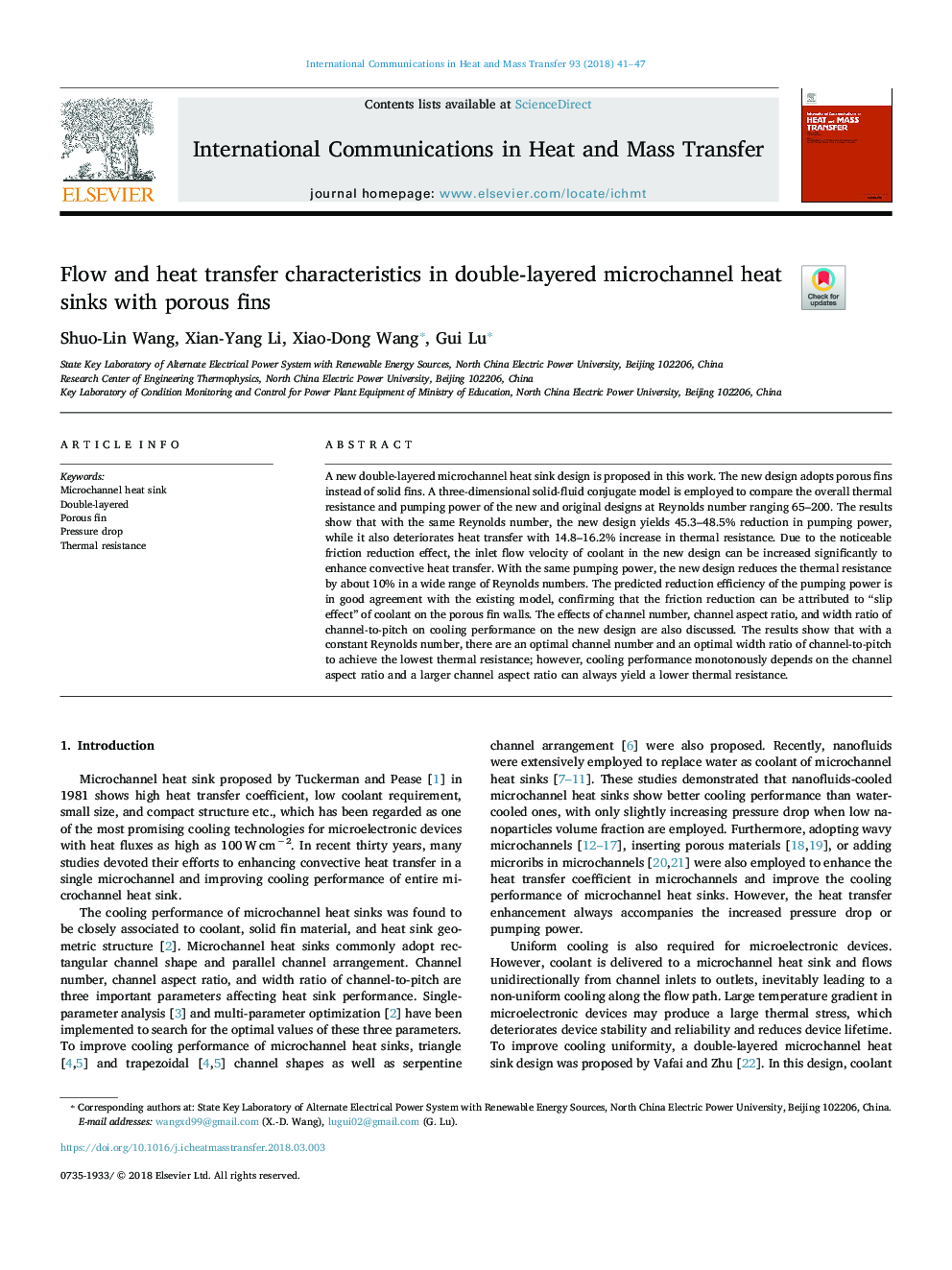| Article ID | Journal | Published Year | Pages | File Type |
|---|---|---|---|---|
| 7052925 | International Communications in Heat and Mass Transfer | 2018 | 7 Pages |
Abstract
A new double-layered microchannel heat sink design is proposed in this work. The new design adopts porous fins instead of solid fins. A three-dimensional solid-fluid conjugate model is employed to compare the overall thermal resistance and pumping power of the new and original designs at Reynolds number ranging 65-200. The results show that with the same Reynolds number, the new design yields 45.3-48.5% reduction in pumping power, while it also deteriorates heat transfer with 14.8-16.2% increase in thermal resistance. Due to the noticeable friction reduction effect, the inlet flow velocity of coolant in the new design can be increased significantly to enhance convective heat transfer. With the same pumping power, the new design reduces the thermal resistance by about 10% in a wide range of Reynolds numbers. The predicted reduction efficiency of the pumping power is in good agreement with the existing model, confirming that the friction reduction can be attributed to “slip effect” of coolant on the porous fin walls. The effects of channel number, channel aspect ratio, and width ratio of channel-to-pitch on cooling performance on the new design are also discussed. The results show that with a constant Reynolds number, there are an optimal channel number and an optimal width ratio of channel-to-pitch to achieve the lowest thermal resistance; however, cooling performance monotonously depends on the channel aspect ratio and a larger channel aspect ratio can always yield a lower thermal resistance.
Related Topics
Physical Sciences and Engineering
Chemical Engineering
Fluid Flow and Transfer Processes
Authors
Shuo-Lin Wang, Xian-Yang Li, Xiao-Dong Wang, Gui Lu,
